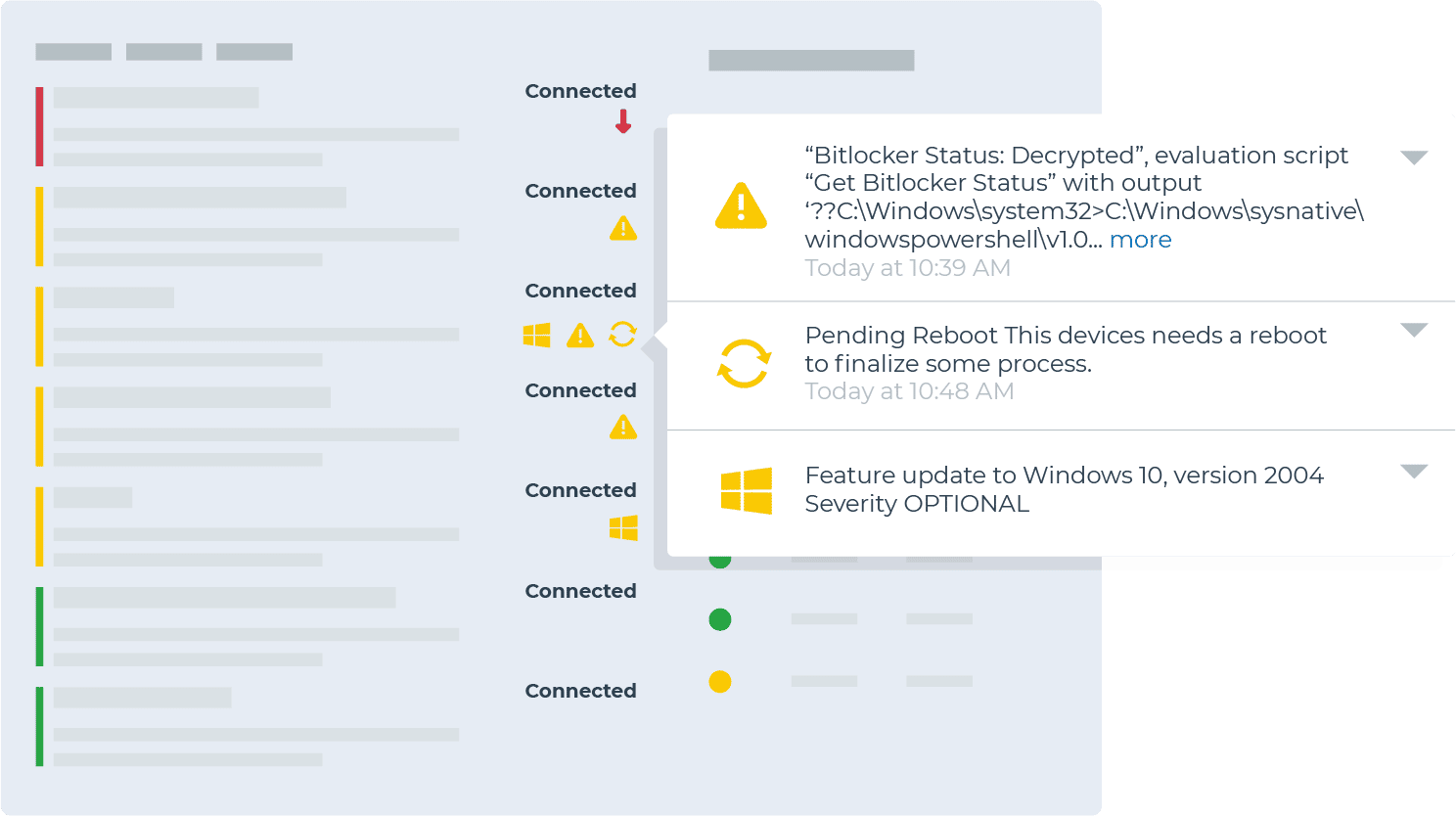Monitoring and alerting are central to the effective use of an RMM. Good monitoring practices enable you to proactively identify issues, resolve them faster, and be more effective. Better monitoring can also play a key role in generating additional revenue and keeping your clients more satisfied.
The challenge is knowing what to monitor for, what requires an alert, which issues can be automatically resolved, and which need a personal touch. That knowledge can take years to develop, and even then the best teams can still struggle with reducing alert fatigue and ticket noise across client devices.
To help those just getting started condense that ramp-up time and narrow their focus, we’ve put together this list of ideas for 25+ conditions to monitor. These recommendations are based on suggestions from our partners and from NinjaOne’s experience helping MSPs build effective, actionable monitoring.
For each condition we describe the following:
- What is being monitored
- How to set up the monitor in NinjaOne
- What actions should be taken if the condition is triggered
Some monitoring suggestions are concrete while others may require a small amount of customization to fit them to your use case.
These monitoring ideas are obviously not exhaustive, and may not apply to every situation or circumstance. Once you’ve gotten started building out your monitoring around these suggestions, you’ll need to develop a more customized and robust monitoring strategy specific to your clients and their needs. We end the guide with additional recommendations to help with that effort and make monitoring, alerting, and ticketing a competitive advantage for your MSP.
Complete the form below:
Get 5 bite-sized ways to grow your business or career every week!
Never Miss Out - Subscribe to the NinjaOne Newsletter
